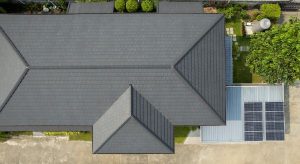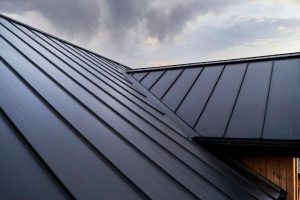Your roof is a major part of your home’s value. One of the most important things you as a homeowner can do is make sure that your roof is properly maintained.
Perform annual or biannual inspections to assess how well the integrity of the roof is holding up. You also want to check for missing or damaged shingles and look for anything that might cause problems down the road. Potential problems would be low-hanging branches or clogged gutters.
However, it is important to remember that not every roof is the same as far as maintenance goes. Different roofing materials require different types of attention to maintain.
In this article, we will discuss the most common types of shingle materials used and how to make sure you get your money’s worth out of them by taking care of them.
 Asphalt Shingles
Asphalt Shingles
The most common material used for roof shingles, depending on location, is asphalt. Economical and typically low-maintenance, they are unfortunately susceptible to a lot of weather conditions. Without a protective coating, enough exposure to the sun can speed up the cracking and decaying process. Hail is another environmental nuisance causing granules to be knocked off and leaving marks and dents in the roof. Wind can rip shingles from the roof, leaving the roof open to damage from the elements. Asphalt shingles require a protective UV coating and a flexible base to protect them from sun and wind damage.
 Wood Shingles
Wood Shingles
While this material requires more upkeep than other shingles, it is highly sought after due to the wonderful aesthetic they bring with them. This type of shingle needs to be made with a strong type of wood, like redwood or cedar. A few things you need to consider before opting for this type of roof:
- the quality of lumber
- average humidity in your area
- how close you are to saltwater
- qualified wood shingle roof installer
All these factors can either make or break your wood-shingled roof. Wood shingles need to be pressure-treated and maintained with sealants or coatings that protect against constant exposure to sun and rain. Without that protection, sun rays can cause your wood shingles to cup or curl. This can lead to fractures. If properly looked after, these shingles can last 10-15 years longer than your typical asphalt shingles.
 Tile Shingles
Tile Shingles
This sturdy, long-lasting contender can take on the damage that the sun, rain, and wind can dish out. While concrete and stone tiles are typically more durable, porcelain and clay tiles can become fragile and break in a hailstorm or high winds. Clay tiles don’t keep well in colder climates that see a lot of snow and ice. They do hold up well in higher temperatures with a lot of sunshine, however. This makes them more popular in arid climates like the southwest U.S. In order to have a healthy tile roof, you need to make sure the tiles are properly installed. Hire a professional familiar with weight restrictions and architectural structures that can hold these heavy shingles. The tiles themselves can last upwards of 50 years, however, the basal layer needs to be replaced about every 10 years to prevent cracking and leaking in the roof.
 Slate Shingles
Slate Shingles
This material can withstand high winds, keep the rain and moisture out of your attic, and even repel hail. These traits make them one of the most durable types of roof shingles out there. Because these shingles are heavy, they will require a very skilled roofing installer to make sure they are done correctly. They will need extra architectural reinforcement due to their weight. You will need to have these checked regularly and fix any problems immediately in order to maintain the durability and long life of your slate roof.
 Metal Shingles
Metal Shingles
As can be expected, metal roofs are one of the most durable roof systems you can have. Their ability to keep out moisture and rain, along with their ability to reflect heat rays from the sun, makes them a popular choice. Hail and wind are the enemies of the metal roof. Hail can dent your metal roof, while wind can cause even more damage to metal roofing than a typical asphalt roof if the metal roofing is not installed properly.
